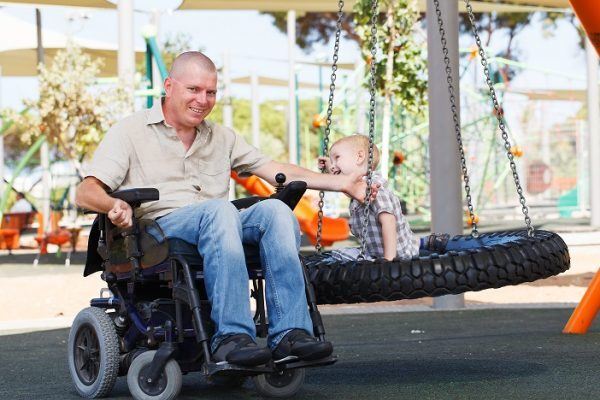California Workers’ Compensation Law provides for the assessment of Permanent Disability based upon the American Medical Association Guides to the Evaluation of Permanent Impairment 5th Edition. When determining Whole Person Impairment, the AMA Guides employs an analysis of the injury’s impact on Activities of Daily Living.
Whole Person Impairment assignment is important for determining Permanent Disability. The purpose of the AMA Guides, within the California framework, is to provide a Whole Person Impairment for each injured body part. This Whole Person Impairment is then placed into a formula to calculate the Injured Worker’s Permanent Disability Percentage. It is that percentage which translates into monetary compensation.
This article is meant to explain what are the Activities of Daily Living, how they are analyzed, and how they can impact the assessment of the Injured Worker’s Whole Person Impairment.
Impairment Ratings and Activities of Daily Living, What is the Relationship?
Per the AMA Guides, “Impairment percentages or ratings developed by medical specialists are consensus-derived estimates that reflect the severity of the medical condition and the degree to which the impairment decreases an individual’s ability to perform common activities of daily living (ADL), excluding work.
Impairment ratings were designed to reflect functional limitations and not a disability. The whole person impairment percentages listed in the Guides estimate the impact of the impairment on the individual’s overall ability to perform activities of daily living, excluding work, as listed in Table 1-2. “Guides to the Evaluation of Permanent Impairment” at Page 4.
The fact that the AMA Guides excludes consideration of work activities provides some irony to the fact that the Guides are used to compensate Injured Workers on their Workers’ Compensation cases by considering the injury’s impact on Activities of Daily Living. In handling California Workers’ Compensation cases, these cases, there is always the concern that an Injured Worker may not be adequately compensated for their inability to perform their occupation, trade or job.
Impairment Ratings and Activities of Daily Living are related. In certain assessments of Whole Person Impairment, there are ranges of Whole Person Impairment within the tables for particular medical conditions. The impact of the injury on ADLs can impact the assessment of the Whole Person Impairment by the evaluating physician. In certain tables, the ranges are not very large. On other tables, the ranges are quite large. If the impact of the medical condition is significant to Activities of Daily Living, it is likely that the Examining Physician will provide a Whole Person Impairment number that is within the high range of either/or the class or table that is applicable.
What are the Activities of Daily Living?
Per the AMA Guides, Activities of Daily Living “include such activities as self-care, personal hygiene, communication, ambulation, travel, sexual function, and sleep. “
How are the Activities of Daily Living broken down?
Per the AMA Guides 5th Edition, Table 1-2, See Page 599, the following are the definitions of each ADL.
Self Care:
- Urinating
- Defecating
- Brushing Teeth
- Personal Hygiene
- Combing Hair
- Bathing
- Dressing Oneself
- Eating
Communication:
- Writing
- Typing
- Seeing
- Hearing
- Speaking
Physical Activities:
- Standing
- Sitting
- Reclining
- Walking
- Climbing stairs
- Hearing
- Seeing
- Tactile Feeling
- Tasting
- Smelling
Sensory function:
- Nonspecialized Grasping
- Lifting
- Tactile
- Hand Activities
- Discrimination
Travel:
- Riding
- Driving
- Flying
Sexual function:
- Orgasm
- Ejaculation
- Lubrication
- Erection
Sleep:
- Restful
- Nocturnal sleep pattern
How is Impairment of Activities of Daily Living evaluated?
Limitations are to be judged by the medical disorders and not by other factors. Factors such as lack of money or transportation are not to be considered when addressing ADLs. See AMA Guides.
How is the impact of Activities of Daily Living assessed?
“In the context of the individual’s overall situation, the quality of these activities is judged by their independence, appropriateness, effectiveness, and sustainability. It is necessary to define the extent to which the individual is capable of initiating and participating in these activities independent of supervision or direction.” See AMA Guides at P. 361.
Who makes the Assessment on the impact of Activities of Daily Living and How?
In California Workers’ Compensation Law, the evaluating physician, either the Agreed Medical Examiner, Qualified Medical Evaluator, or Treating Physician, will make the assessment of the impact of activities of daily living.
In many Qualified Medical Evaluations and Agreed Medical Evaluations, the evaluating doctors will either directly ask the injured worker about their ADLs or provide the Injured Worker a written questionnaire to make such an assessment. Per the AMA Guides, “[t]he examiner must assess not simply the number of activities that are restricted but the overall degree of restriction or combination of restrictions.
For example, a person who is able to cook and clean might be considered to have marked restriction of daily activities if he or she were too fearful to leave home to shop or go to the physician’s office.” AMA Guides to the Evaluation of Permanent Impairment, 5th Edition, Page 361.
Where Can I Get Legal Advice?
If you would like a free consultation regarding workers’ compensation, please contact the Law Offices of Edward J. Singer, a Professional Law Corporation. They have been helping people in Central and Southern California deal with their worker’s compensation cases for 26 years. Contact us today for more information.
